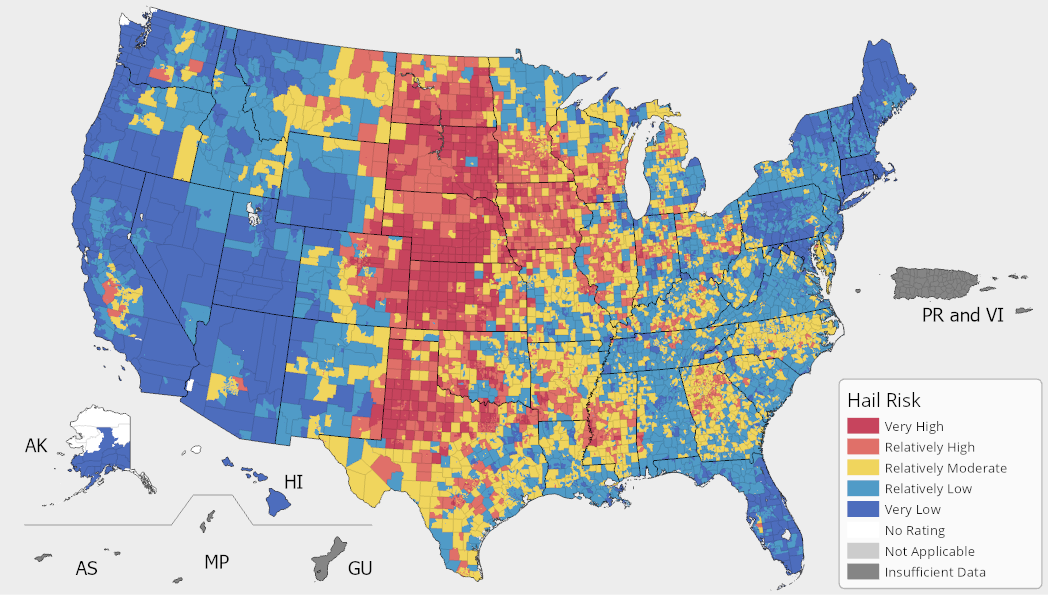Hail
Hail is a form of precipitation that occurs during thunderstorms when raindrops, in extremely cold areas of the atmosphere, freeze into balls of ice before falling towards the earth's surface.
In the National Risk Index, a Hail Risk Index score and rating represent a community's relative risk for Hail when compared to the rest of the United States. A Hail Expected Annual Loss score and rating represent a community's relative level of expected building, population, and agriculture loss each year due to Hail when compared to the rest of the United States.

Hail Exposure
A Hail exposure value represents a community's building value (in dollars), population (in both people and population equivalence), and agriculture value (in dollars) exposed to Hail.
Hail Annualized Frequency
A Hail annualized frequency value represents the average number of recorded Hail hazard occurrences (events) per year over the period of record (34 years).
Source Data
National Oceanic and Atmospheric Administration's Storm Prediction Center's Severe Weather Database
Hail Historic Loss Ratio
A Hail historic loss ratio is the representative percentage of the exposed consequence type value (building, population, or agriculture) expected to be lost due to a Hail hazard occurrence.
Hail Processing Methodology
For comprehensive details about the Hail processing methodology, see the National Risk Index Technical Documentation.


